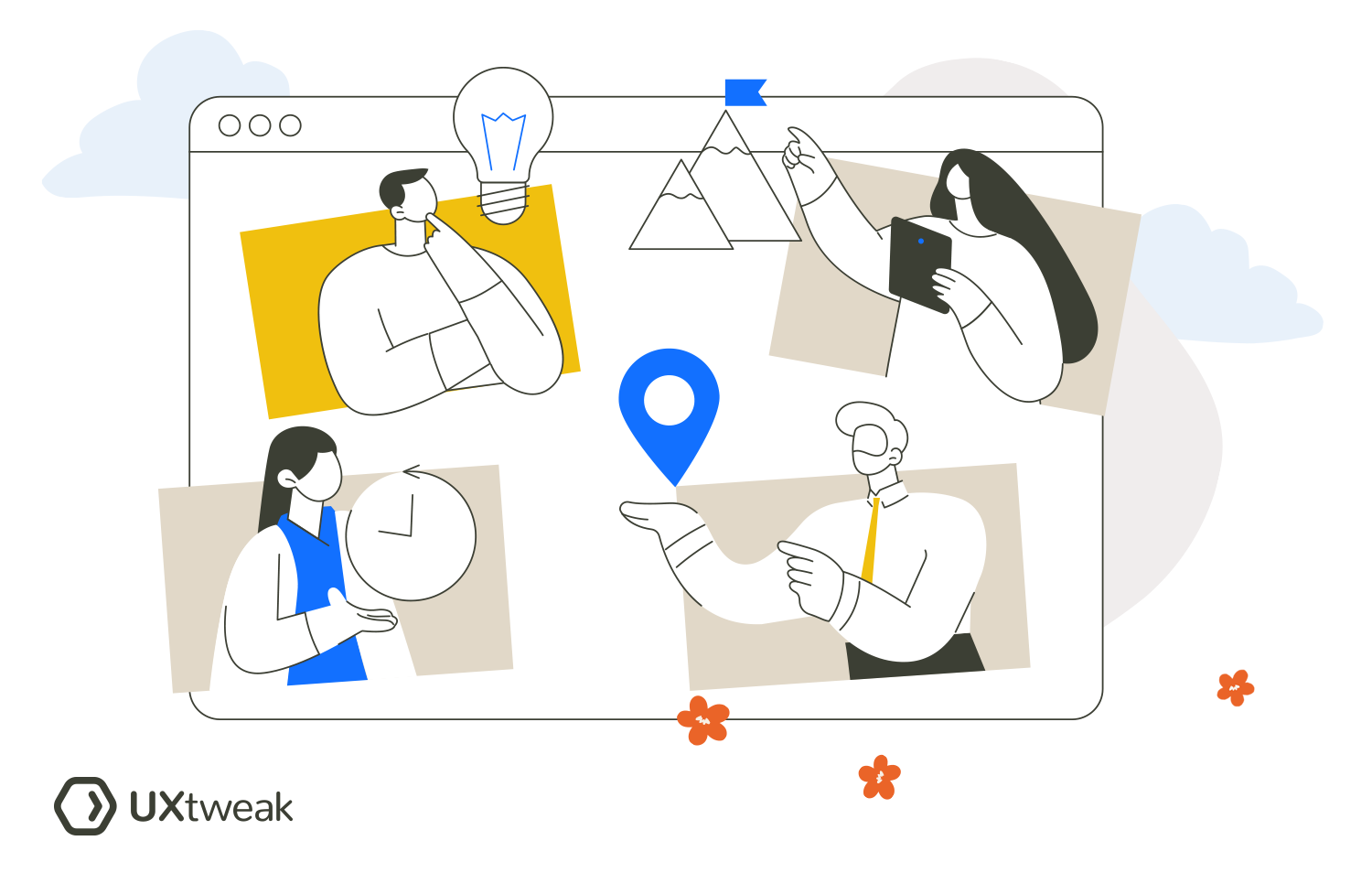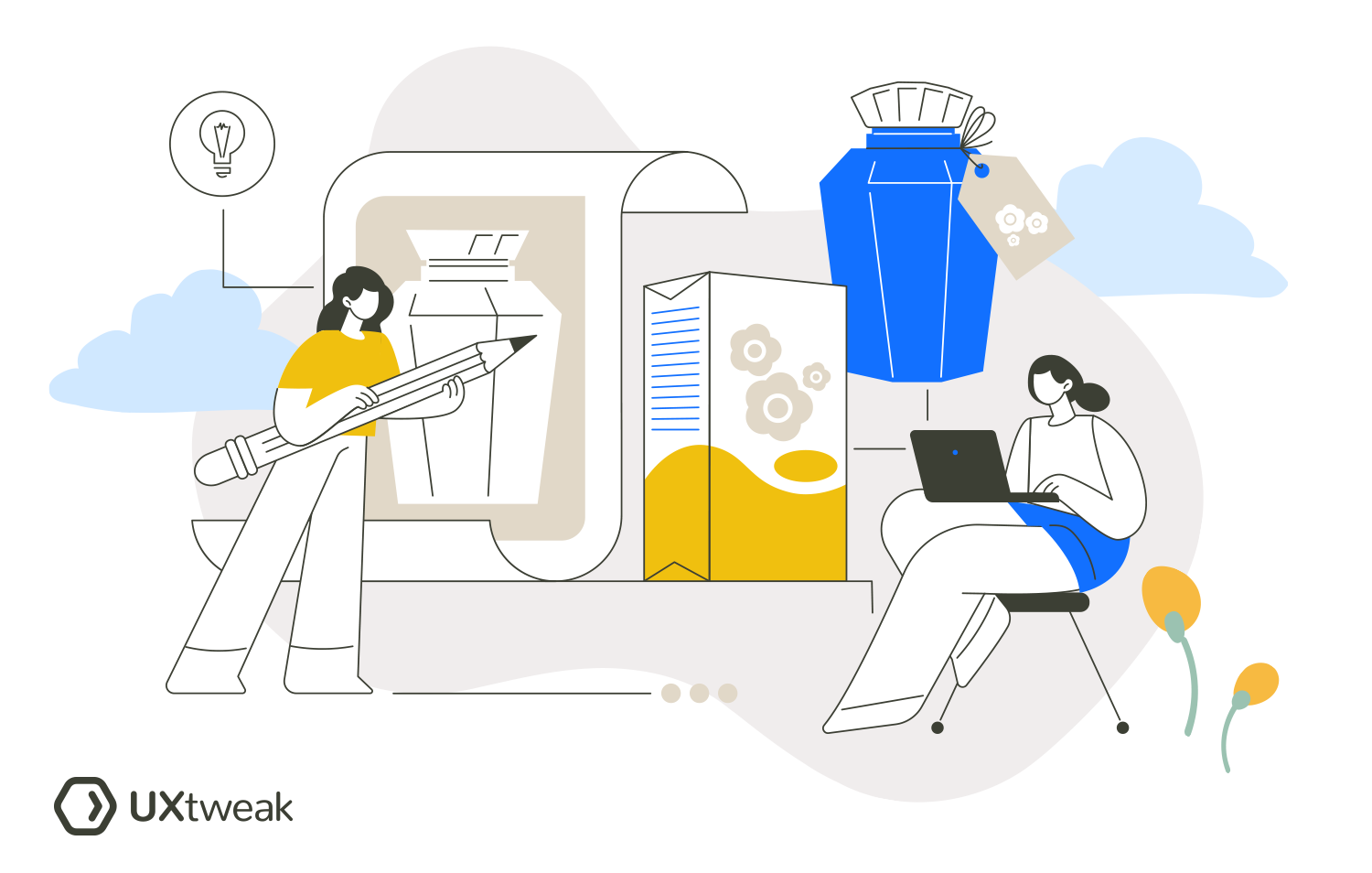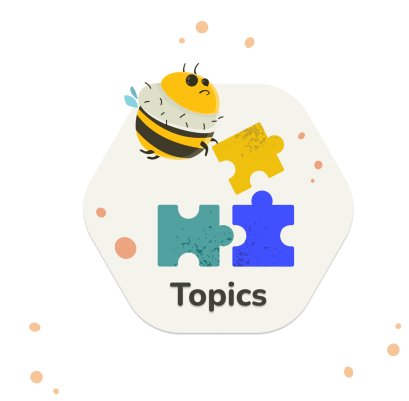Creating successful products that users love requires an iterative and structured approach with a lot of research and testing behind it. Today we’ll take a look at the process of successful product design and learn what you can do to ensure that your future product gets the love and recognition it deserves.
How to structure your design process, what tools to use, and when to conduct research? Continue reading to find out!
Key Takeaways:
➡️ Product design melds user needs with business objectives, shaping products that are not only functional but also user-centered and market-ready.
❗ Product design process typically consists of 5 stages: empathize, define, ideate, prototype and test.
✅ Engaging real users in usability tests and other research activities is crucial for gaining authentic insights and crafting a product that genuinely resonates with the target audience.
🧠 Enhancing user experience, reducing costs, and creating a competitive advantage are some of the key benefits of a well-rounded product design.
💡 Utilizing a variety of tools, such as project management tools, whiteboarding tools, prototyping tools, and user research and testing tools, is essential in navigating through the different stages of the product design process effectively.
🐝 You can use UXtweak for all types of research and testing activities throughout the product design process.
What is product design?

Product design is the process of conceptualizing, developing, and testing the product that fits the needs of your target audience and solves a specific market problem. It encompasses various aspects like understanding and identifying a market opportunity, researching your users, clearly defining the problem, developing a proper solution, validating and refining the solution.
The goal of the product design process is to strategically approach the creation of a new product, ensuring it is created with a focus on its users and satisfies a particular demand on the market.
Just like UX designers, product designers will consider the overall user experience of a product, its visual aspect, and functionality, but will also factor in equal parts of design strategy and business goals. They take into account the entire product creation process from conception to manufacturing or development.
Why does good product design benefit you and your users?
Product design bridges the gap between a user’s needs and the business’s offerings when done right. It allows teams to not only create a product that solves the problem of their target audience in a user-friendly way but also ensure that it drives business success.
Here are some of the key benefits of good product design:
Enhanced User Experience
Good product design assures that you approach the creation of a new product in a structured and organized way, with the user at the center of all your decisions. It is an iterative process that is based on research, testing, and constant improvement. This kind of approach inevitably leads to enhanced user experience and better products overall.
Reduced Costs
With its iterative nature, product design significantly reduces redesign costs and minimizes any other usability problems that arise after the launch. You can spot most of the crucial issues at the prototyping stage of the product development process, address them, and test the design with users to ensure there are no flaws left.
Competitive Advantage
Good products stand out. Always. Customers always notice when the product is designed to satisfy their needs in a sufficient way, not just make money from them. Product design helps you put users at the heart of your design process, address their concerns quickly, and create a product they love.
Product design process

The product design process is a structured iterative approach that can help you turn an idea into a tangible, market-ready product. There are different frameworks you can follow to succeed in the product design process. However, there’s one that has been proven to work best over the years and that is Design Thinking.
It consists of 5 main stages:
- empathize
- define
- ideate
- prototype
- test
Let’s take a look at each of the stages in detail to better understand the process of design thinking.
1. Empathize
The empathize stage is all about research. The first thing you need to do in your product design process is understand the problem you’re trying to solve, your target audience, and your market.
Maybe you already have certain assumptions that can lead to the development of actually effective solutions. However, in order to not waste your time and money on creating a useless product you need to start by researching the market and users. This will help you understand if there is a demand for your product and if so, how it needs to look in order to satisfy the needs of your target audience.
At this stage, you can utilize user research methods like:
- Interviews: Talking with users 1:1, asking open-ended questions to understand their experiences, pain points, and needs.
- Surveys: Gather qualitative and quantitative insights about your target audience in a quick, easy-to-distribute format.
- Observations: Study user behaviors in their natural environment to gain contextual insights.
- Usability tests: Great for when you already have a product and are working on its improvement (ex. adding new features, redesigning). Usability tests can help you find out how users interact with your product and where they encounter issues.
2. Define
Analyze the insights collected at the previous stage, find patterns, unmet needs, and market gaps where your product could become a solution. Put it all together in a clear problem statement that encapsulates the challenges or needs identified during research. This problem statement will guide you during the further product design and development process.
To help you define the problem statement try asking yourself questions like:
- Who are our users?
- What are the user’s main pain points and challenges? What are their goals?
- How are they currently solving their problem?
- How are competitors addressing this problem?
Create artifacts like user personas and user journey maps to represent different user types, their behavior, and needs, and visualize how your product is going to meet those needs. At the end of this process, you should have a clear problem statement that provides direction for ideation.
3. Ideate
The ideation stage is where the fun comes in. You need to generate a variety of possible solutions to the defined problem.
The most effective way to do that is through brainstorming. Invite 4-7 people from your team and encourage them to vocalize any ideas that come to mind. Write down everything, even the craziest suggestions, and then try to select the ideas with the most potential via voting.
4. Prototype
Build prototypes for the potential solutions. These will be the scaled-down versions of your future product that you can use for testing and collecting feedback. You can start with simple low-fidelity prototypes or go for the high-fidelity interactive version of your design.
You can create those in UX design tools like Figma or InVision. Prototyping your solutions before jumping to their development will allow you to spot issues early on and look at the product from the user’s point of view.
5. Test
Last, but definitely not least – testing. It’s time to test your prototypes with users to assess their usability and spot UX design flaws and areas of confusion. This is the stage where you’ll get the most insights and fine-tune the product up to its best version.
For prototype testing, we recommend choosing an online Prototype Testing tool like UXtweak. All you need to do is share a link to your prototype and add tasks for the participants. They’ll then complete the tasks by interacting with your prototype, which gives you insights into their behavior and reveals areas of improvement.
See how easy it is in this quick video tutorial:
Analyze the results of your prototype testing and refine your designs. With tools like UXtweak, you can rewatch the recordings, find patterns in user behavior, and spot issues that need to be fixed.
After this, refine your solution and conduct another round of testing with users. Repeat the process until there are no significant usability issues left. The next steps are finalizing the design, moving into development, and eventually launching the product to the market.
It’s crucial to note that the design thinking process is not strictly linear. Teams often iterate, moving back and forth between stages based on findings and feedback, ensuring continuous refinement of the design.
What are product design best practices?
- Involve real users: The key ingredient of insightful usability tests and other research activities is conducting them with real users. Make sure that the people you recruit for those tests are representative of your target audience because it’s the only way you can collect meaningful feedback.
- Design for all: Ensure that the product is usable and accessible to as many people as possible, including those with disabilities. Consider cultural and regional differences to make the design globally relevant and usable.
- Prioritize issues: Prioritize usability issues according to their severity. Solving crucial ones should be your top priority at all times, while small fixes can sometimes wait. Remember, you don’t have to launch a perfect product and you can always fix things after the launch. However, to save you time and money, try to solve most of the crucial issues at the prototyping stage.
- Maintain consistency: Maintain consistency in UI elements such as buttons, icons, and color schemes across the product. This will help to keep the design clean, organized, and aligned with the brand.
- Minimize cognitive load: Create intuitive, straightforward designs that don’t overwhelm users. Leverage information hierarchy and don’t put too many details on one page.
- Build an intuitive information architecture: Create an intuitive and user-friendly information structure for your product. For that, we recommend using an online card sorting tool and leveraging the power of tree testing.
- Create emotional connections: Utilize emotional design principles to create products that resonate with users and elicit positive emotional responses.
What types of tools are used for product design?

Project management tools
Project management tools help product design teams manage the timelines, resources, and scopes of projects, ensuring the organized progression from initiation to completion. They are helpful for ensuring you maintain a structured approach and keep track of all the tasks, research and design sessions, deadlines, etc.
Some of the most popular project management tools are Asana, Trello, Jira, etc.
Whiteboarding tools
Whiteboarding and mind-mapping tools are useful throughout the whole product design process. They help to sketch ideas, brainstorm, and collaborate visually with team members, often in real time.
You can use them to take notes during your brainstorming, analyze research findings, or even create artifacts like user personas and user journey maps.
Some of the most popular ones are tools like Miro or Mural.
Prototyping tools
Prototyping tools or UX design tools, are used to create digital prototypes of your ideas, and test and iterate on them before development. They make it easy for designers to collaborate on projects and create all types of designs, from rough wireframes to interactive prototypes.
There are tons of prototyping tools online. The ones we all love and use are Figma, Adobe XD, Sketch, InVision, and others.
User research and testing tools
User research and testing tools are used to gather insights into user needs and evaluate design usability and experience. These tools will be your must-haves at the empathizing and testing stages of the product design process.
There are a lot of UX research tools available that serve various purposes, but there are also all-in-one solutions like UXtweak. With our tool, you can conduct all the research and testing activities you need in one place.
Product management tools
Product management tools assist in managing product development, from ideation through to launch, ensuring alignment with business goals. They help to maintain a comprehensive product development strategy, prioritize features, and develop product roadmaps.
Great examples of such tools are Aha! and ProductPlan.
Ready to take your product design to the next level?
Product design is a step-by-step journey from having an idea to putting a new product out there in the world. Mastering it requires a structured user-centric approach and commitment to continuous improvement.
With the help of the right tools and this complete guide, you’ll be able to ensure that your product design process goes smoothly and you create something truly meaningful and helpful.
Continue to the next chapter of this guide to find out more about product design or jump straight to it, register for your UXtweak account, and start your product design journey with research today!



